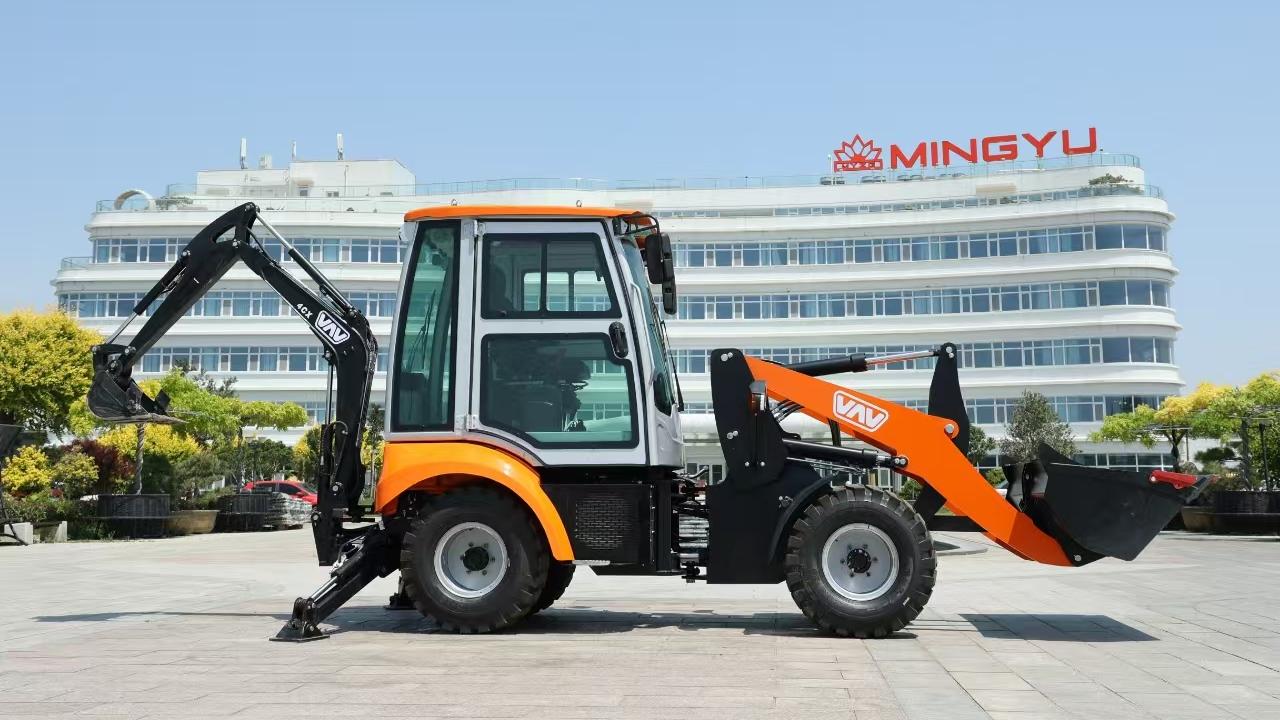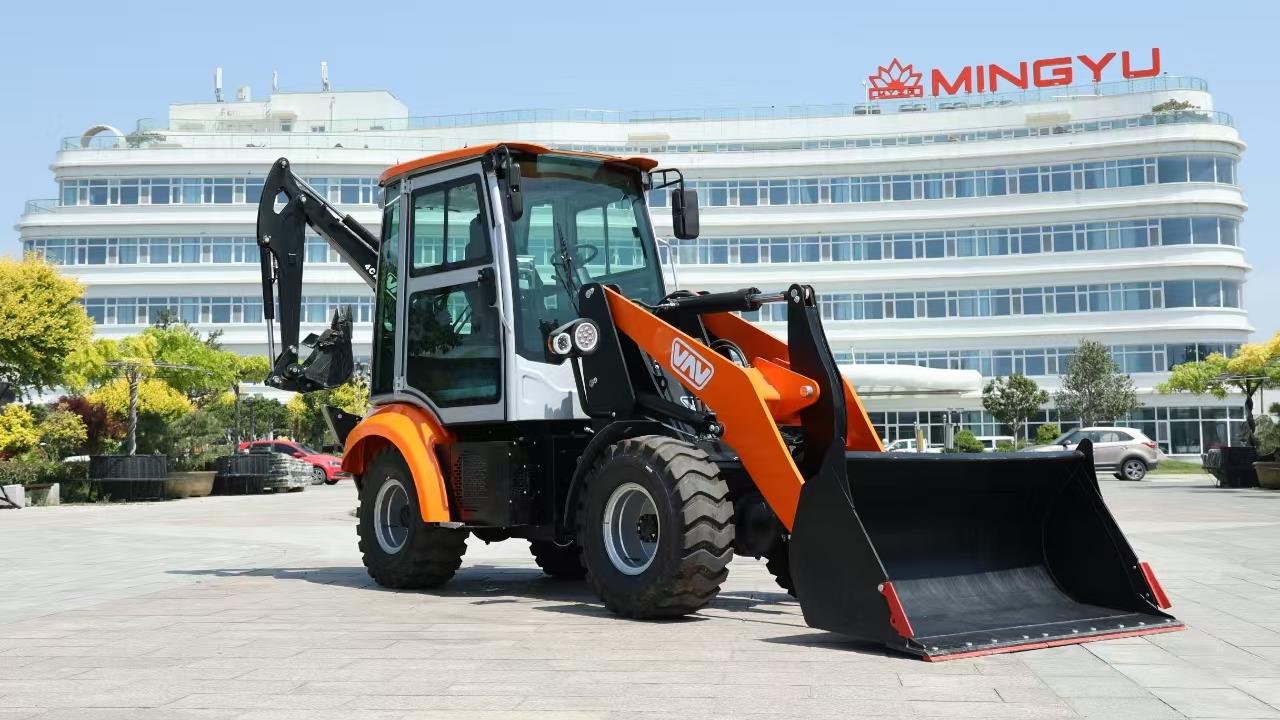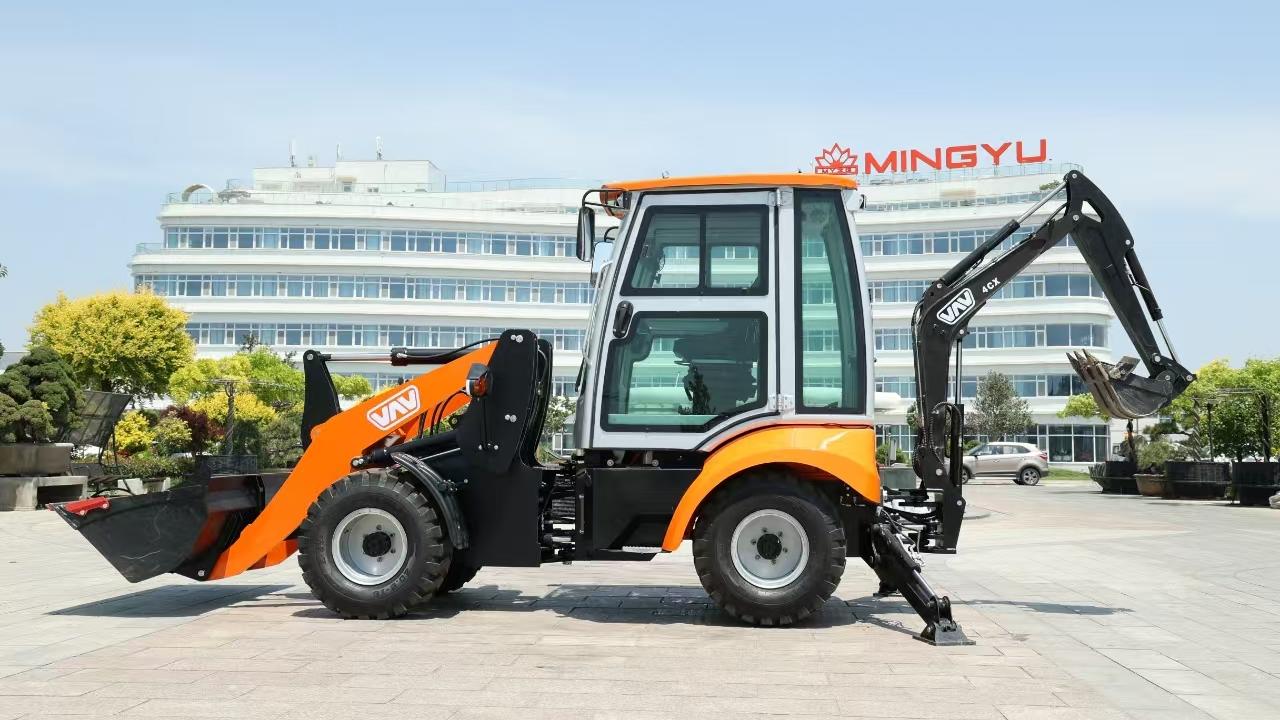What is the Lifting Capacity and Digging Depth of a Backhoe Loader?
1. Introduction
Backhoe loaders are among the most versatile and widely used pieces of equipment in the construction and agricultural industries. Designed with a digging bucket on the back and a loader-style bucket on the front, they are capable of performing a wide range of tasks—digging, lifting, trenching, loading, and more.
When evaluating a backhoe loader for any job site, two specifications are especially important: lifting capacity and digging depth. These metrics determine what kind of materials the machine can move and how deep it can excavate, making them essential for project planning, safety, and operational efficiency. In this article, we’ll explore what these terms mean, what factors influence them, and how different models compare.
2. Overview of a Backhoe Loader
A backhoe loader is a multi-functional machine that combines three key components:
A front loader bucket for scooping and transporting materials.
A backhoe arm for digging trenches and holes.
A wheeled or tracked chassis for mobility on various terrains.
These machines are popular on job sites due to their ability to perform multiple tasks without switching equipment. They’re used in urban construction, road maintenance, landscaping, agriculture, and more.
3. Understanding Lifting Capacity
Lifting capacity refers to the maximum weight a backhoe loader can safely lift with its loader bucket or rear boom. This capacity is critical when moving heavy materials such as gravel, soil, pipes, or building supplies.
Several factors influence lifting capacity:
Hydraulic power: The strength of the hydraulic system determines lifting force.
Stabilizers: Outriggers help stabilize the machine and increase lifting capability.
Boom angle and extension: The further out the boom extends, the less weight it can lift.
Terrain and slope: Uneven ground reduces safe lifting performance.
Load center: How far the load is from the pivot point affects leverage and balance.
4. Average Lifting Capacity Range
The lifting capacity of a typical backhoe loader ranges from 1,500 kg (3,300 lbs) on compact models to over 4,000 kg (8,800 lbs) on larger machines.
Here’s a comparison:
JCB 3CX: 1,800 kg (rear arm), 3,200 kg (front loader)
CAT 420F: 2,000–2,300 kg
CASE 580N: 1,950 kg (rear), up to 3,300 kg (front)
John Deere 310SL: Approx. 3,000 kg front loader capacity
Some backhoes include lifting charts that vary with boom height and radius—always refer to the manufacturer’s guide.
5. Understanding Digging Depth
Digging depth refers to the maximum vertical depth the backhoe can reach when fully extended. This spec is essential for tasks like digging foundations, septic systems, water lines, or utility trenches.
Factors that influence digging depth include:
Backhoe arm design
Dipper stick length
Whether the machine has an extendable stick (extend-a-hoe)
6. Average Digging Depth Range
Most standard backhoe loaders dig to depths between 4.3 meters (14 ft) and 5.8 meters (19 ft). Extendable arms can reach beyond 6 meters (20 ft) in some models.
Examples:
JCB 3CX: 4.25 m (standard), 5.46 m (with extend-a-hoe)
CAT 420 XE: 5.8 m with extendable dipper
CASE 580 Super N: 5.5 m max depth
John Deere 315SL: Around 4.5 m
7. How to Choose the Right Capacity and Depth
Choosing the correct backhoe involves more than just picking the most powerful model. Consider the following:
Project requirements: Are you digging deep trenches or just lifting pallets?
Material type: Wet soil, gravel, or debris may require more lift power.
Site conditions: Tight spaces, soft ground, or uneven terrain impact what model is suitable.
Transportability: Larger machines are harder to move between job sites.
Budget and fuel efficiency: Bigger isn’t always better if the job doesn’t demand it.
8. Attachments That Affect Performance
Backhoe loaders are compatible with many attachments, including:
Buckets of various sizes
Hydraulic hammers
Augers
Grapples
Thumbs for grabbing
These tools can increase the range of tasks but may alter the machine’s weight balance and lifting performance. Always check specs when using non-standard attachments.
9. Safety Considerations
Operating at or near maximum capacity comes with risk. Safety tips include:
Always use stabilizers to prevent tipping.
Avoid lifting loads over people or on slopes.
Never exceed manufacturer-rated load limits.
Train operators to read lifting charts and recognize warning signs.
Neglecting these precautions can lead to equipment damage or accidents.
10. Maintenance and Calibration
Regular maintenance is crucial for optimal performance:
Inspect hydraulic hoses and cylinders
Lubricate pivot points
Check tire pressure and stabilizer pads
Calibrate lift arms and sensors if available
Newer models may include load sensors and performance monitors to alert operators in real-time.
11. Comparison Table
|
Model |
Max Lift Capacity |
Max Digging Depth |
Horsepower |
Operating Weight |
|
JCB 3CX |
3,200 kg |
5.46 m |
92 hp |
8,000 kg |
|
CAT 420 XE |
2,300 kg |
5.8 m |
100 hp |
8,300 kg |
|
CASE 580 Super N |
3,300 kg |
5.5 m |
95 hp |
8,250 kg |
|
John Deere 310SL |
3,000 kg |
4.5 m |
99 hp |
7,800 kg |
12. Conclusion
A backhoe loader’s lifting capacity and digging depth are critical factors when selecting the right machine for your needs. Whether you’re lifting concrete barriers or digging a sewer line, matching your machine’s specs to the task ensures safety, efficiency, and long-term value.
Understanding how attachments, terrain, and hydraulic systems affect performance helps you get the most out of your investment. When in doubt, consult the manufacturer or dealer for exact specifications tailored to your job.
Post time:Jun.20.2025



